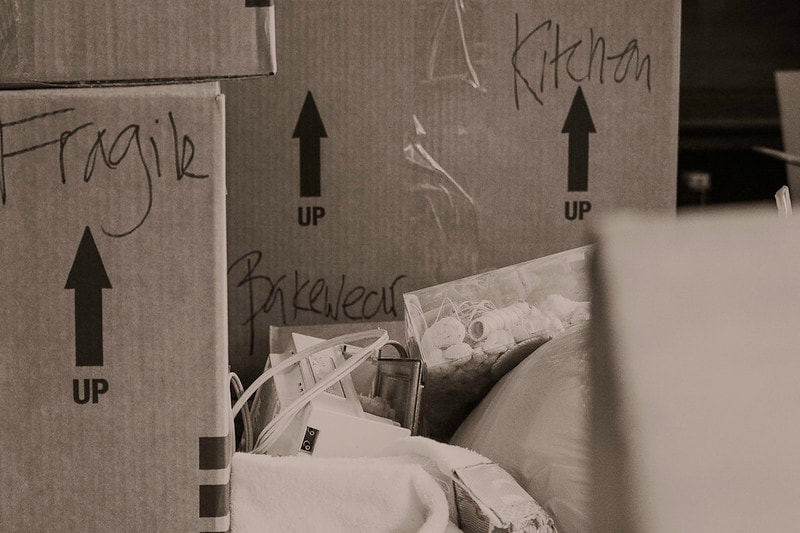|
Downsizing can be emotionally challenging for many seniors, but some may actually look forward to moving into a smaller place that requires less upkeep. Some seniors may bring up the idea of downsizing themselves, however, in some cases it may be necessary for family or friends to sit down with their loved one and discuss options as their ability to keep up with basic household tasks changes. Sensitivity when having these talks is essential, and the subject likely should not be brought up unless the senior is experiencing physical or medical or issues including cognitive decline that are hindering their quality of life. Approach the topic of downsizing and moving gently. Be careful that the senior doesn’t feel like they are being ganged up on by friends and family. Make sure that you express authentic care and concern in order to avoid feelings of confrontation. Ultimately you want them to know that their wellbeing that is top priority. 1. Finding a New Place to Call Home One of the most important things to address when downsizing is where to go next. You must consider if your loved one can still live safely alone. Are there memory issues? Is mobility a concern? Do they need help dressing, bathing or taking medications? What is the budget? Is it possible to stay near loved ones? What type of setting will your loved one be most comfortable in? Figuring out where they will move helps to determine how much downsizing will be necessary. Also the certainty of a destination may help the senior feel more comfortable about moving and less reluctant about the process. Some of the most common downsizing options for seniors include:
2. Make a Plan As soon as it has been agreed that downsizing and moving will be in the best interest of your loved one, it’s time to start planning. Based on the space available in the new home decide what will be going with the move. Set a date to move into the new home and work backward from there in there. This will determine when packing needs to be complete, when the movers need to arrive and when to transfer services such as cable and internet. Also be sure to cancel services that will no longer be needed such as weekly lawn care or security system monitoring. Each plan will be a little different depending on an individual’s situation so it helps to write down a list of tasks, set dates for each task and share the written plan with everyone who will be involved in the process. 3. Begin De-cluttering It’s essential when deciding what to take on the move, to know the measurements of the new living space. This can help determine which items go to the new home, especially when considering large pieces of furniture. Go through the house room by room and separate items into five Categories:
When trying to determine which category an item should go into, consider the following questions:
It can be difficult to sort through a lifetime of belongings. Many things may have strong personal significance. Sometimes taking pictures of Items that have sentimental value will help a senior preserve the memory of a cherished item while letting go of the physical object that they may not truly need. 4. Contact a Senior Move Manager If a senior or their families begin to feel overwhelmed, don't have the time, live too far away or simply prefer to have professional assistance hiring a senior advisory agency may be a good option. These individuals specialize in helping seniors downsize or move into a senior living community. These services can range from helping choose a new residence, assisting with downsizing in the home, to assisting with packing and moving and even cleaning up the old residence afterwards. Comments are closed.
|
AuthorTyice Strahl Categories
All
Archives
May 2023
|
- Home
-
Settings
- Assisted Living
- Home Care
- Independent Living
- Memory Care
- Skilled Nursing
- Adult Family Homes
-
All Communities
>
- Aspen Quality Care
- Avamere South Hill
- Brighton Court
- Brookdale Nine Mile
- Brookdale Park Place
- Cheney Assisted Living
- Cherrywood Assisted Living
- Colonial Court
- Cornerstone Court
- Evergreen Fountains
- Palouse Country
- Fairview Assisted Living
- Fairwinds
- Fairwood
- Fieldstone Memory Care
- Good Samaritan
- Maplewood Gardens
- Moran Vista
- North Point Village
- Orchard Crest
- Pine Ridge Memory Care
- Emilie Court
- Ridgeview Place
- Riverview Retirement
- Rockwood Retirement Community
- Rose Pointe Assisted Living
- Royal Park
- South Hill Village
- Sullivan Park Assisted Living
- Sunshine Health Facilities
- Touchmark Assisted Living
- Willow Grove
- Wind River
- Alderwood Manor
- Franklin Hills
- Manor Care
- North Central Care Center
- Providence St Joseph
- Regency at Northpointe
- Royal Park Health and Rehabilitation
- Spokane Veterans Home
- The Gardens on University
- Spokane Assisted Living Directory
- Locations
- Services
- About
- Senior Living Blog
- Contact


 RSS Feed
RSS Feed
